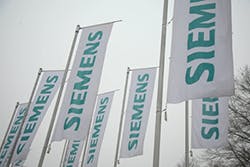Siemens Releases Simatic PCS 7 Version 8.2
Siemens releases Simatic PCS 7 version 8.2 process control system with new functionalities to improve user convenience and the performance and efficiency of the process control system over the entire life cycle of process plants. Version 8.2 of Simatic PCS 7 offers individual and networked plant monitoring. Web systems can now be operated and observed over the intranet/internet with Simatic PCS 7. For this, operators can use extensive configuration possibilities for individual and secured online access to the operating and monitoring level of a production plant, enabling the implementation of benefits such as remote control room concepts.
The integration of mobile terminals in Simatic PCS 7 is extended. This allows information such as production characteristics, trend or alarm functions to be viewed at any time from any location using smartphones or tablets – no matter which operating system is used. Simatic PDM (Process Device Manager) supports plant-wide access to field devices. Diagnosis, maintenance, parameterization, configuration and commissioning can be performed by mobile terminals with standard browsers and by any optional computer within a system.
The new version of Simatic PCS 7 supports operators with a new range of search and visualization functions including measuring point browser, which accelerates the selective search for measuring points with relevant plant information. The Operator Trend View tool depicts the process sequence in the form of trend graphs for a rapid overview. The group view visualizes existing measuring points.
The new Logic Matrix allows the switching of interlock statuses in a production plant in compliance with the cause and effect principle. The Logic Matrix can be processed, exported or imported with Microsoft Excel. In Simatic PCS 7 version 8.2, mass data engineering is extended. To avoid load peaks in the power supply, the new version of PCS 7 offers integrated monitoring of all energy-relevant consumption data for a complete plant. The load management functions to control loads such as drives are a constituent part of the technology library and can be simply implemented.




